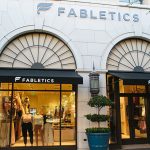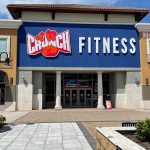The holiday season may have begun with a languid November that saw same-store sales dip 0.3% despite easy comparisons to a weak 2008, but a pivotal December saw retailers rebound to post nearly 3% growth for the season. As was predicted by some analysts following the November report, holiday shoppers waited until the last possible second to make their purchases, squeezing every possible promotion from retailers who vowed not to endure a repeat of the inventory catastrophe of a year ago. As a result, the mob of late-comers boosted December same-store sales growth to its highest mark since April 2008 and marked the third month of the past four months that showed growth — a clear indication that consumers’ once-depleted discretionary income is finally on the mend.
The impressive 2.8% growth for December was better than what most analysts originally expected. The International Council of Shopping Centers, which tracks 33 retail-chain stores, expected improvement of 2.5% but said the late-season surge had exceeded forecasts. For the two-month (November-December) traditional holiday season, the ICSC reported consolidated comps were up 1.8% compared to a 5.6% decline in the comparable period of 2008. The 2009 holiday season pace was the strongest since 2006 (the last non-recession holiday season), according to a report by the ICSC.
Perhaps most encouraging was the performance of the recently-maligned teen retailers, which have seen bargain bin discounters severely cut into sales as cash-strapped parents scour the racks for deals. The teen segment (-2.8%) posted it’s strongest numbers of the year as The Buckle (+6.6) and Aeropostale (+10.0) sustained strength and Zumiez (+0.3%) and American Eagle (+7.0%) both supplied pleasant surprises. Following up on a flat November, Gap Inc. rode strength from its Old Navy brand (+7.0) and Gap (+1.0), which offset a 3% drop in its higher-end Banana Republic brand. Sabrina Simmons, CFO for Gap, Inc., said holiday promotions and product assortments had allowed the retailer to “compete effectively” while delivering improved merchandise margins. At Abercrombie & Fitch, holiday gift card promotions continued to be a royal flop as the once-trendy, now-passe teen apparel retailer continues to stubbornly stand by high price points that parents and young adults refuse to pay. Once again, comps at A&F (-19.0%) were crippled considerably by the company’s struggling Hollister brand (-25%). Hot Topic whiffed on forecasts, posting comps that fell 10.9%, 2.4 points worse than expected by some analysts.
Not surprisingly, discounters continued to fare well in a price-savvy retail environment. The TJX Cos. (+14.0%), Ross Stores (+12.0%) and Target (+1.8%) led the way for discounters as consumers continue to show a propensity for deeply-discounted designer labels. Notably, Ross outperformed analysts’ predictions by an estimated 5.1 percentage points, prompting the Pleasanton, CA-based company to raise fourth quarter guidance.
“December benefited from strong traffic trends as customers continued to respond favorably to the wide array of (bargains)
” said Michael Balmuth, vice-chairman and CEO at Ross. “Shoes, home, and dressed remained the strongest merchandise categories in December, while the Northwest and Southeast were the top-performing regions.”
At TJX, president and CEO Carol Meyrowitz said customer traffic continued to accelerate in December and noted that she expects the consumer to “remain focused on value as the economy improves, which has been the case when previous recessions have abated.” Meyrowitz confirmed that The TJX Cos. was significantly raising fourth quarter guidance.
Department stores exhibited growth for the first time since April 2008, as continued strength from the luxury sector offset weakness from JC Penney (-3.8%) and Stage Stores (-2.2%). Kohl’s (+4.7%), also raised fourth quarter guidance as management noted the retailer has seen “strong increases” in transaction per store. Saks (+9.9%) continued to propel the category along with surprising strength from Neiman Marcus (+4.5%), Nordstrom (+7.4%) and Macy’s (+1.0%) — all of which swung to growth after posting losses a month ago — and launched the luxury sector to its strongest segment performance since November 2007. Representatives at Macy’s said sales had been boosted by strong online sales, while Saks said a designer clearance event had helped it outperform forecasts. The much-needed surge in sales prompted Macy’s and Nordstrom to up guidance for the fourth quarter.
Warehouse clubs finished up with a strong December, as both Costco (+4.0%) and BJ’s Wholesale (+4.8%) exceeded analysts’ expectations. Representatives at BJ’s said strong sales from frozen foods, cigarettes, clothes and electronics offset weakness in jewelry, TVs, toys and trash bags, while Costco noted that inflation in fuel prices and strengthening foreign currencies had boosted monthly sales.
In related news, a report released by the Labor Dept. late last week confirmed that US employers unexpectedly cut 85,000 jobs during December, more than the expected 8,000 drop.
Looking ahead, the ISCS anticipates that January same-store sales will be flat to up 1% as consumers no longer have an obligation to shop and clearance inventory is sparse. ICSC Research also anticipated that the calendar-year 2010 comps will increase 3% to 3.5%, which the ISCS noted would be the strongest since 2006 (+4.8%).
The Buckle December comps increased 6.6% on net sales that increased 12.1% to $147.1 million for the five-week fiscal month. Men’s sales, which represented 43.5% of total sales, were up about 4% on strength from denim, woven shirts, sweaters, outerwear and footwear. Women’s sales were up approximately 18.5% on strength from denim, woven and knit tops, sweaters, outerwear, accessories and footwear. Average footwear price points were up approximately 9.5%.
Zumiez Inc. reported comps for the five-week period ended Jan. 2 increased 0.3% on net sales that increased 7.7% to approximately $77.6 million from $72 million a year ago. Weekly comps were negative 4.5%, negative 0.2%, negative 4.5%, positive 1.3% and positive 12.3% for weeks one through five, respectively. On a pre-recorded call, CFO Trevor Lang said a slight decrease in dollars per transactions, driven by a decrease in unit retail, mostly offset an increase in units per transaction.













